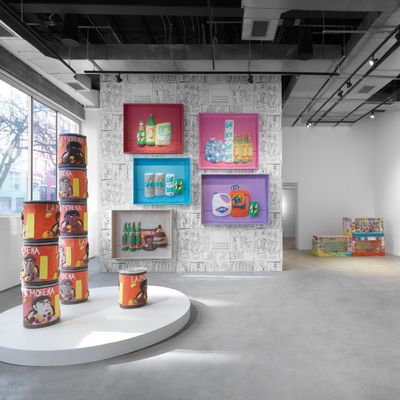
In the 1980s, when I lived alone in a 275-square-foot rent-free, unheated studio apartment owned by a former Warhol superstar who was an heir to a real-estate fortune, I shopped exclusively at my two local bodegas on Avenue B. Drug dealers lived downstairs. Their dogs patrolled the hallways. I was robbed more times than I can remember, including once when my front door was unscrewed from its hinges.
The bodegas were oases of comparative calm. Alphabet City — where a charming farmers’ market springs to life at Tompkins Square Park every Sunday — was once what we could call an underserved neighborhood, a food desert. The bodegas, often run then as now by people of color, were one-stop mini-malls not only for canned beans and soda but also diapers, detergent, loose cigarettes, and beer. (I bought single Marlboros for years as I tried and failed to quit smoking.) Some sold drugs. Others had a cat curled up in the window, taking a nap between mice hunts. You might pay through thick plexiglass while a couple regulars sat on plastic crates and looked at you askance. Or laughed and talked in Spanish. These were not necessarily places you lingered in. But we wouldn’t have survived without them.
The bodega has since become an object of soft-focus nostalgia. The artist Tschabalala Self’s “Bodega Run,” a project that recently took up Swiss Institute for just three short days, from January 11 to 13, is an attempt to more precisely evoke it — in what Self calls “a hood menagerie.”
Born in Harlem in 1990, Self is a magician of material, combining cast paper pulp, found objects, and fabric (velvet, lace) to create vivid works of sculpture and painting. She is untethered to any one medium, as comfortable with collage as large-format portraiture. Her work often features strong Black men and women in stylized poses or commanding space, though she has made abject sculptures with bowed legs and no torsos. It’s all part of what has become a long-running investigation into the vicissitudes of Black American identity, although that is not the limit of her concerns. Her work stretches beyond this moment in both directions, the past and the future.
“Bodega Run” is like entering a grocery store of the mind. Self, who lives in the Hudson Valley, debuted the project at the London gallery Pilar Corrias in 2017 and has since updated and elaborated upon it at the Hammer Museum in Los Angeles and elsewhere. Previous shows featured portraits of women walking down bright aisles, metal and laser-cut crates, black cats made of plywood, and still lifes of Boar’s Head meats. The latest iteration of this project enlarged what could be seen as Self’s very New York version of a Wunderkammer. Ostensibly an event to promote Self’s new book collecting the works of “Bodega Run,” the opening at Swiss Institute was packed with people eager for the artist to sign their copies.
On the walls hung two huge portraits of a man and a woman, respectively, against a patchwork surface of painted M&M’s wrappers, Vicks vitamin-C packets, and Hershey’s bars, a dollar bill sewn into the surface. The Pop colors and lively packaging suggest a sense of wonder at the cornucopia of choice provided by the market, yet Self’s wobbly lines also make you feel woozy, as if her subjects are walking through a hall of mirrors. Across from the paintings, Self stacked large replicas of cans of La Morena beans, a play on Warhol’s Brillo boxes, offering a commentary on the deceptive comforts of mass production. On the walls were three-dimensional cast-paper models of typical corner-store items like 7UP and Clorox (two different kinds of poison), while in a corner stood crates covered in scratch-off lottery tickets.
Everywhere in Self’s show you could sense a tension. On the one hand, there is her affection for these mom-and-pop enterprises that are part of a dying urban tapestry; on the other, her ambivalence about the way poverty and its consequences (addiction, malnutrition, self-defeating escapism) are reflected in and perpetuated through them.
So many of the bodega’s core functions have been made redundant by Whole Foods and delivery apps and Amazon Prime. The edibles and joints sold by legal and semi-legal weed shops are now as ubiquitous as the bodegas themselves. All this has turned the bodega into a rosy symbol of analog, pre-gentrification New York, a place where “the clerks will share their life stories with you” and in turn “tell you about all the ways you’re screwing up your romantic life,” as a New York Times op-ed described it in 2017. This is not quite how it was.
Were the dusty bodegas of old superior to the anonymous, flattened spaces where many of us now buy our food? Yes and no. Self’s pop-up show was a milestone in a project that testifies that, especially in this city, there’s no such thing as a love that’s uncomplicated.

